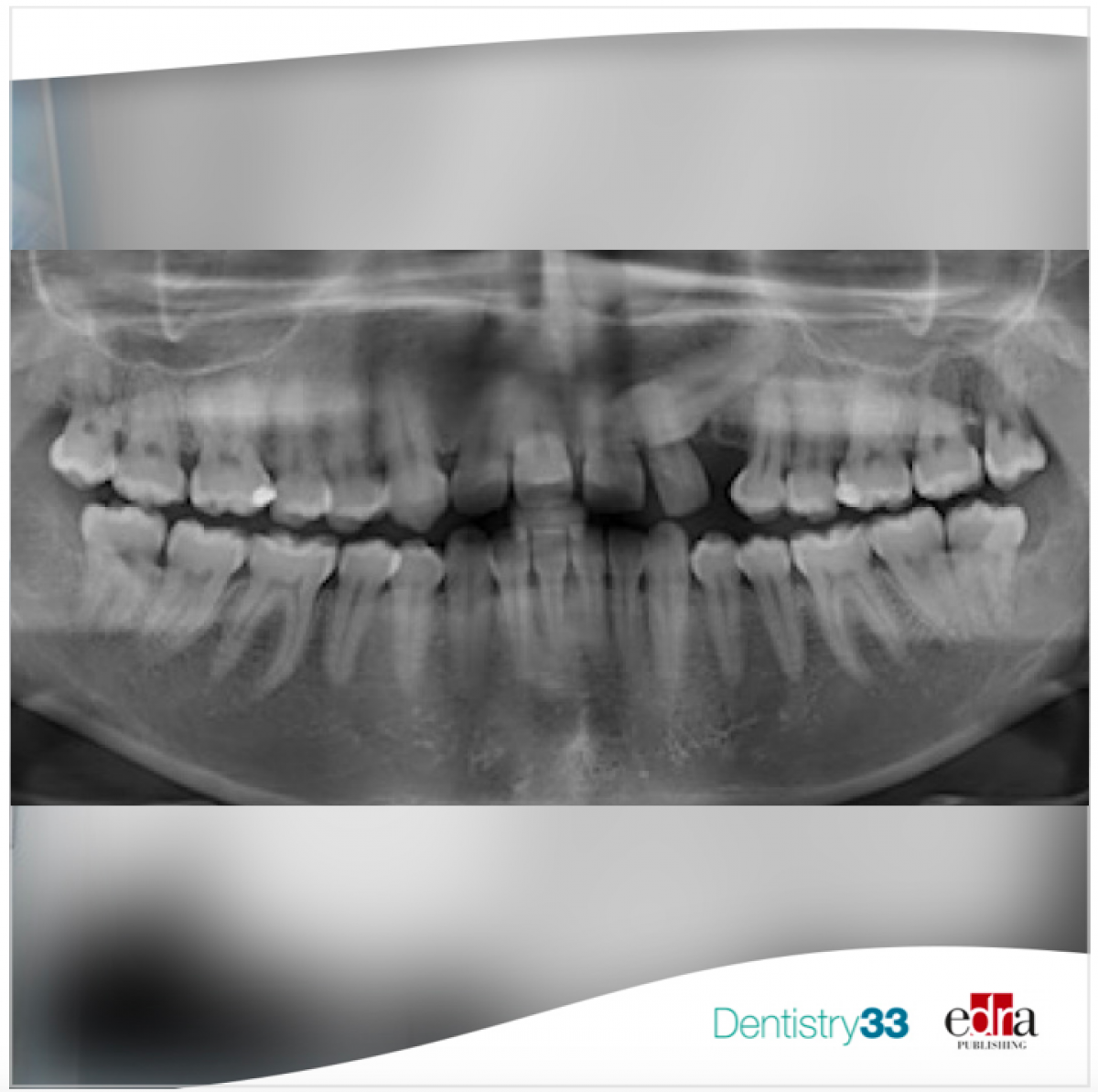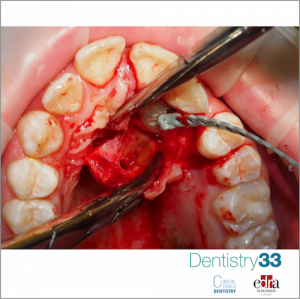
Prevention of palatally displaced canines
Davide Elsido
The maxillary canines usually emerge at the mean age of 10.5 years in girls and 11.5 years in boys, with individual variation of 3–4 years. In 2–3 per cent of the Caucasian population, these teeth fail to erupt and become impacted, which is defined as obstruction by hard or soft tissue structures and/or an ectopic eruption pattern.
Other definitions that are used in literature are: ectopic or displaced, meaning an abnormal position that may result in tooth impaction.
The aetiology of the impacted canines is obscure and probably. Early preventive measures in the mixed dentition for palatal canine impaction are desirable, due to the risk of root resorption of the neighbouring permanent incisors. Such resorptions have been reported to occur in 47 per cent of subject in the age range of 10–13 years. However, a considerable variation in diagnostic tools, study designs, sample sizes, and research approach has produced results and conclusions that are sometimes conflicting and may be difficult to compare and interpret.
In the issue of November of The Angle Orthodontist, an article was published to investigate whether extracting the primary canine and primary first molar was more beneficial than extracting only the primary canine in improving the emergence rate of PDCs (palatally displaced canines). Thirty-two children aged 9.5–13.5 years with 48 PDCs were randomly allocated to either the double-extraction group (DEG) or single-extraction group (SEG). Clinical and radiographic examinations were performed at baseline and at 6-month intervals until the canine emerged or orthodontic treatment was started.
As suggested by literature, the ultimate criterion for successful outcome may not only be the rate of eruption/non-eruption of PDCs into the dental arch. It is also very important where in the mouth the canines emerge, as the distance from the emergence point and favorable position in the dental arch affects the orthodontic treatment length and cost.
As results, no significant difference was observed between groups. Significant predictors of canine emergence were initial canine angulation and space conditions at the beginning of treatment.
To conclude, double or single primary tooth extraction procedures are equivalent in supporting PDC eruption into the oral cavity and into a favorable position in the dental arch. Initial canine angulation and space assessments may be used as predictors of successful PDC eruption.
For additional information: Double vs single primary tooth extraction in interceptive treatment of palatally displaced canines: A randomized controlled trial.
 Related articles
Related articles
The treatment of palatal displaced canines (PDCs) is one of the most challenging treatments in orthodontic dental care. The invasive and long-lasting treatment often requires interceptive extraction...
 Read more
Read more
Editorials 10 October 2025
With proud smiles and crisp white coats, ninety-three learners from the DDS Class of 2029 and the International Dentist Pathway Class of 2028 marked the start of their dental careers at the UCSF...
Periodontology 10 October 2025
Continuous professional development (CPD) in Periodontology refers to the overall framework of opportunities that facilitate a life-long learning practice, driven by the learner-practitioner and...
TheraBreath, the #1 alcohol-free mouthwash brand in the U.S.*, has introduced a new line of dentist-formulated, clinically tested toothpastes designed to support professional oral care...
News 10 October 2025
New officers and trustees were installed at the Minnesota Dental Association’s Leadership Conference on September 19 in Minneapolis.
News 10 October 2025
Smartee Denti-Technology today announced that Professor Gang Shen, its Chief Scientist and Executive President of TaiKang ByBo Dental, has once again been named to the World’s Top 2% Scientists...











